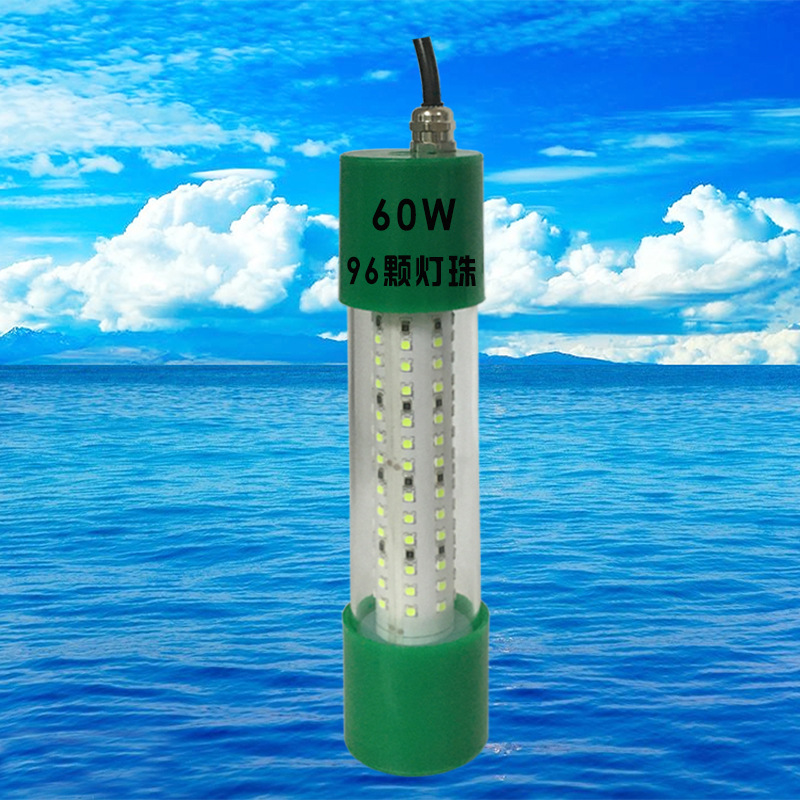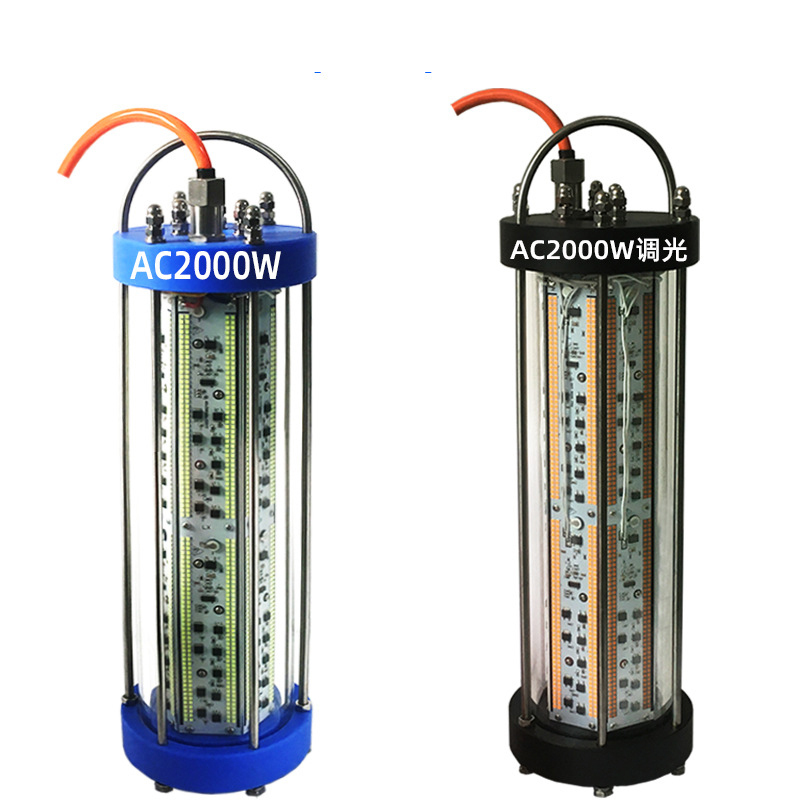IP68 2000W Green LED Fishing Light Underwater Fishing Light Fish Lure Deep Sea
How Do underwater fishing lights Work?
Under the guidance of light, plankton microorganisms will gather, and then aquatic insects that eat plankton microorganisms will also be attracted. Then came the small fish that ate plankton microbes and aquatic insects. . . In this way, the low-end and terminal organisms in the marine ecological food chain converge here. . .
The water near the fishing lights looked misty as copepods (one of the important early bait organisms for marine fry), shrimp and other microbes swarmed. Once attracted (depending on the local species) small fish (as food for larger fish) will remember the position of the fishing lights and repeat each night to forage. After a few weeks of this, the bow or pier where the lanterns are placed becomes a place that often hosts schools of fish that come together.

Features
1. 12-24V can make 30W-500W, AC220V inpput can make 500W-3000W2. High brightness, max 140lm/w, 360 degree light3. 50,000 hours service life4. Can be used both in fresh water and salty water5. External 316 stainless steel anti-corrosion treatment, anti-collision design. strong and sturdy6. IP68 waterproof design for underwater fishing
7. Hook design, use a safety rope to avoid loss of lamps8. Dimmable(Default non-dimming, need customized)
Specifications
| Power |
600W |
1000W |
2000W |
3000W |
| Input Voltage |
AC230V |
AC230V |
AC230V |
AC230V |
| Luminous Flux(white light) |
130LM/W |
130LM/W |
130LM/W |
130LM/W |
| Lamp Size |
Ø160*320mm |
Ø160*390mm |
Ø160*580mm |
Ø160*670mm |
| N.W. |
10KG |
12KG |
14KG |
19KG |
| Protection |
IP68 |
| Material |
POM, Aluminum alloy + 316 stainless steel |
| Light color |
White/Green/Yellow etc. |
| LED chip |
Philips 3030 |
| Light Distribution |
360° |
| Product color |
Blue/Black |
| Wire length |
30m,Other lengths need to be customized |
| Dimming |
Be customized |
| Maximum placement depth |
100m |
| Operating Temp. |
-40°C- 60°C |
| Lifespan |
>50,000 Hrs (L70 @ 25°C) |
| Warranty |
3-year warranty |
| Certificates |
CE ROHS FCC |
More detailsAbout phototaxis
According to the fishing and night fishing environment and the experience of fishermen, the phototaxis of various fish is not completely absolute LED light wavelength (bright color).
1: The directional behavior toward the light source is called positive phototaxis, and the behavior away from the light source is called negative phototaxis. Many fishes have positive phototaxis, such as saury, sardine, fat-eyed herring, round scallop, mackerel, horse mackerel, spotted sunflower, silver croaker, jaundice, and spearfish.
2: There are various hypotheses about the response of fish to light stimuli, such as curiosity, suitable illumination, feeding clusters, conditioned reflex, forced movement, confusion and instinct. The phototaxis process of fish can be roughly divided into two stages: the first stage is that the fish swims close to the light source after being stimulated by light; the second stage is that the fish stays and moves under the light source. However, after a period of time, phototactic fish will leave the light source and swim away due to adaptation to light, fatigue and changes in the environment. Some adults without phototaxis, their juveniles also have phototaxis response, such as sweetfish, eel and other juveniles. The phototaxis of the same fish varies with the developmental stage, male and female sex, food intake and swim bladder structure. For example, the phototaxis of the juvenile fish is more obvious than that of the adult fish, and it is easy to be attracted by light when the food intake is small. The phototaxis of saury was weakened during the gestation period. In addition, the degree of buoyancy of the fish after being trapped is related to the structure of the swim bladder.
3: There are three types of phototaxis: stimulus proportionality, goal preservation and retention. Stimulus proportionality is the stimulus caused by the difference in the amount of light on the light-receiving surfaces of the two eyes. The target retention and retention are the stimulation caused by the difference in the amount of light received by the light-receiving surface of the fisheye. The fish produce phototaxis to maintain the same amount of light received. The sensitivity curves of fish eyes to different wavelengths of light are different. The bottom fish has a narrow spectral range, about 410-650 nm, while the pelagic fish has a wider spectral range, about 400-750 nm. .
4: Fish have a certain range of suitable illumination and cluster in the water layer of this illumination. The suitable cluster illumination of fish changes with the change of environmental conditions. For example, under the illumination of water lights, the saury clustered about 2 meters below the light source and stayed for a long time. Under the illumination of the underwater light, although the amount of light is smaller than that of the water light, the fish can surround and swim to the light source, but leave the light source after a short stay. The fish with strong phototaxis are also the fish species with strong clustering, such as sardines, scallops, mackerel, saury, jade tendon and so on. At night, fish stay in the light source for long periods of time for defense, bait or discovery, resulting in a swarm response.
5: The phototaxis of fish is related to water temperature and moonlight. In general, the higher the water temperature, the weaker the phototaxis; on the contrary, the phototaxis is enhanced. The moonlight is bright, and the phototaxis cluster effect is poor. If the illumination of the light is enhanced, the cluster effect can be improved.
DC12V input series







 AC input series
AC input series




 Applications
Applications
Underwater fishing lights
MULTI-USE: Attract prawns, squid shad bass trout redfish, and to your favorite spot with these super bright led fishing lights. This night fishing lure bait performs equally well in small fishing nets, sea fishing, cage fishing, and light cover net.Packing and shipping




















